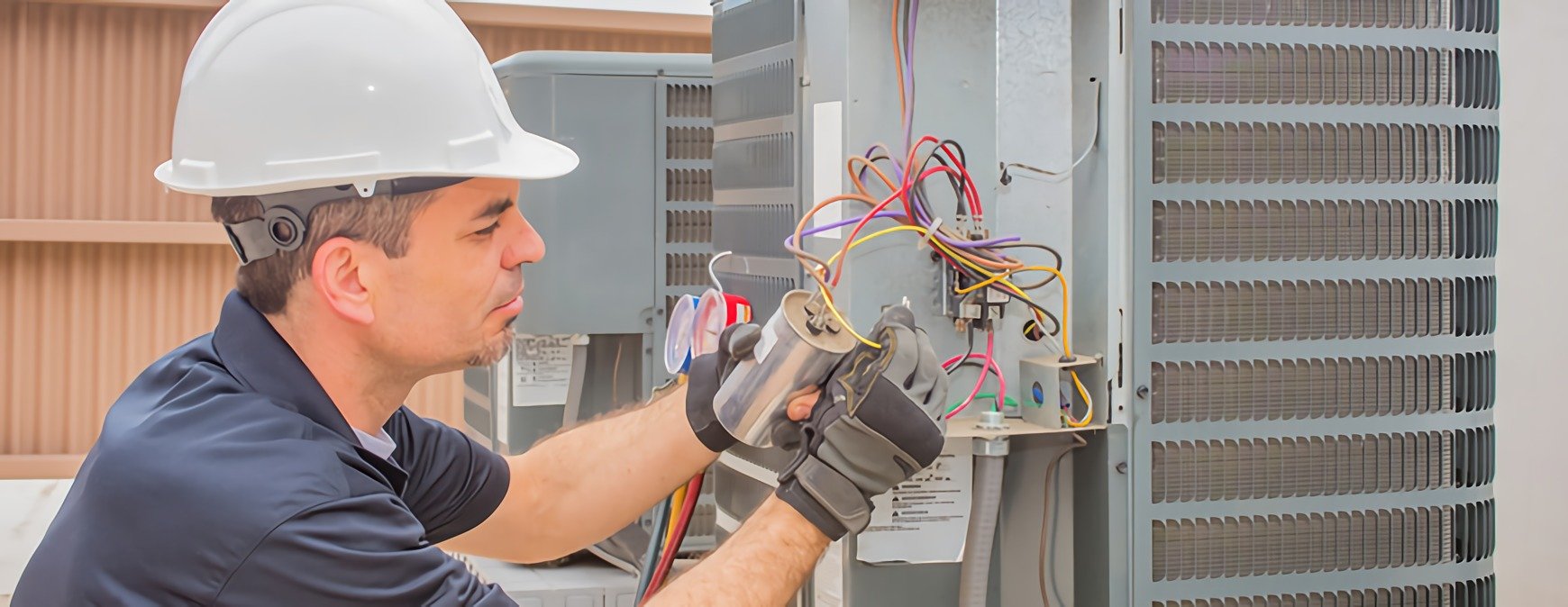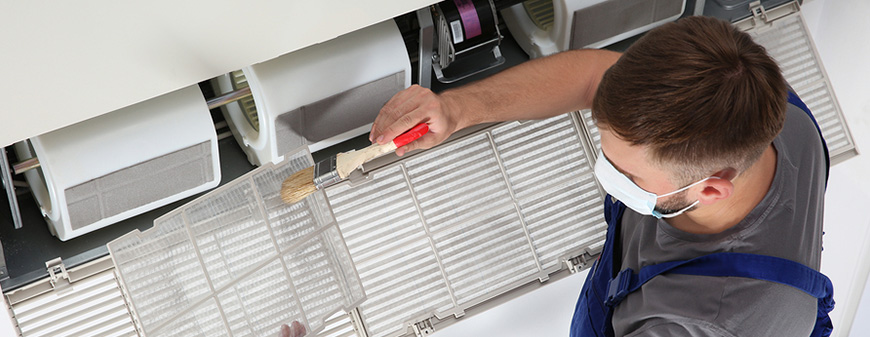
Do you buckle your seatbelt when you get in the car? Look both ways before crossing the street? Get a flu shot every year?
Safety plays a big role in our everyday lives.
And guess what? It’s also crucial while in HVAC, both when you’re training and when you’re working.
Review the HVAC safety checklists below and keep them in mind before you enter the lab or make a service call.
HVAC Safety Checklists
Working with electrical wiring, chemical refrigerants and hot, heavy equipment can be risky. That’s why safety is one of the first things you’ll learn in your HVAC classes.
Get Started on the Path to a New Career
Fill out our form to learn how we can help you change your life.
From the environments you work in to the gear you use, there are safety precautions you must follow in the HVAC field.
Suit Up in Safety Gear
You won’t get much done in the classroom or at the work site if you’re injured, and one of the first measures you can take to prevent injury is to suit up in HVAC safety gear:
- Steel-toed work boots
- Full-coverage clothing like long pants and long-sleeved shirts
- Heavy gloves
- Hard hat
- Safety glasses or goggles
- Face shield
- Respirator
- Earplugs[1]
Replace worn or defective gear when necessary. When it’s old or damaged, it won’t protect you as well.
Equip Yourself for the Job
Aspiring HVAC professionals and experienced technicians need the equipment to get the job done safely and correctly. Here are the tools you need to do that:
- Wrenches
- Clamp meter
- Wire strippers
- An anemometer
- Vacuum gauge
- Refrigerant leak detector
Packing faulty or damaged equipment won’t do you any good, either. Always examine tools before and after each job to make sure they’re in proper working order for the next one.[2]
Evaluate the Worksite
Never rush into a job. Take your time to evaluate the work environment, the equipment and what’s required of you to service it.[3] Here are some dangers you need to watch out for:
- Electrical risks
- Chemical hazards
- Asbestos exposure[4]
- Equipment temperature
- Slippery surfaces
- Fall dangers
- Hazards in confined spaces[5]
Knowing what you’re up against directs you in taking the necessary precautions to avoid an accident or injury.[6]
Take Electrical Safety Precautions
Installing electrical wiring and components is part of the job of an HVAC technician, so it’s important to follow electrical safety procedures[7]:
- Turn off all electrical equipment.
- Use lockout and tag procedures.
- Test if circuits are energized using the appropriate multimeter.
- Remove jewelry and clothing made of synthetic fiber or other conductive materials.
- Make sure the ground and surrounding surfaces are dry before operating electrical equipment.
- In damp environments, inspect electric equipment and cords for defects, and employ a ground-fault circuit interrupter (GFCI).[8]
Follow Chemical Safety Best Practices
Wearing safety gear can help protect you from the hazards posed by working with detergents, solvents, cleaning liquids and refrigerants. But it’s also important to observe best practices for handling, storing and transporting chemicals[9]:
- Remove gas cylinders from work vehicles on hot days.[10]
- Weigh and inspect gas cylinders before filling.
- Check valves for damage, leaks or tampering.
- Don’t use cylinders that are damaged, rusted, dented or gouged.
- Store refrigerant cylinders upright with the valves at the top.
- Keep cylinders in dry locations.
- Follow manufacturer guidelines when servicing equipment.[11]
Work Comfortably and Take Breaks
Sweltering summer days and frigid winter nights can be peak times for HVAC service calls. Technicians may have to work long hours in extreme temperatures, making it crucial that they avoid fatigue, dehydration and heat stroke.
- Keep manageable hours.
- Turn down orders when you’re overdone.
- Take breaks.[12]
- Stay hydrated.
- Avoid coffee and caffeine.
- Dress for the weather: cooler in summer and warmer in winter.
- Watch out for drowsy or weak coworkers.
Techs have to take good care of themselves if they want to restore customers’ homes to comfortable temperatures.
Make Safety Routine

Checklists may seem like a simple step, but they can have a huge impact. They’ve made a big difference in the aviation and medical industries. More planes land safely and hospital patients avoid infections.[13] These little lists are proven lifesavers.
If you’re a new HVAC technician, check out 5 important HVAC safety guidelines you should know.
Additional Sources
[1] https://www.contractingbusiness.com/residential-hvac/5-important-safety-guidelines-new-hvac-technicians
[2] https://asuperiorac.com/important-tips-every-hvac-technician-know/
[3] https://asuperiorac.com/important-tips-every-hvac-technician-know/
[4] https://www.doityourself.com/stry/how-to-identify-asbestos-insulation
[5] https://www.rsi.edu/blog/hvacr/5-important-hvac-safety-guidelines-for-new-technicians/
[6] https://www.contractingbusiness.com/residential-hvac/5-important-safety-guidelines-new-hvac-technicians
[7] https://www.bls.gov/ooh/installation-maintenance-and-repair/heating-air-conditioning-and-refrigeration-mechanics-and-installers.htm#tab-2
[8] https://www.osha.gov/Publications/electrical_safety.html
[9] https://www.contractingbusiness.com/residential-hvac/5-important-safety-guidelines-new-hvac-technicians
[10] https://www.contractingbusiness.com/residential-hvac/5-important-safety-guidelines-new-hvac-technicians
[11] https://www.facilitiesnet.com/hvac/article/Refrigerant-Safety-101-Facility-Management-HVAC-Feature–4833
[12] https://www.achrnews.com/blogs/16-guest-blog/post/130780-the-5-biggest-safety-threats-to-hvac-contractors
[13] https://www.entrepreneur.com/article/220112
This blog has been labeled as archived as it may no longer contain the most up-to-date data. For a list of all current blog posts, please visit our blog homepage at https://www.rsi.edu/blog/

